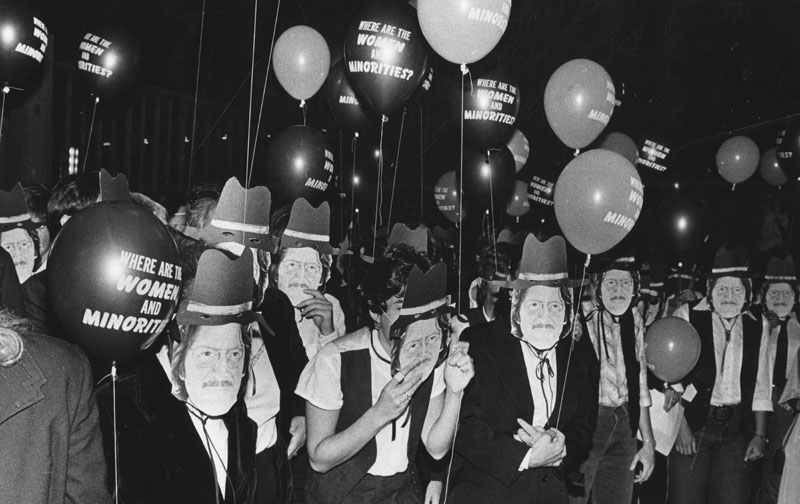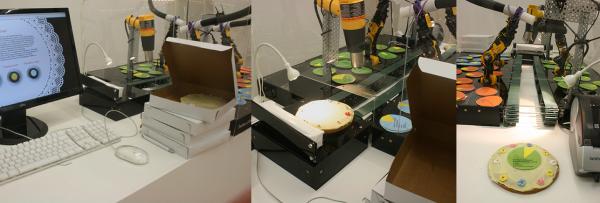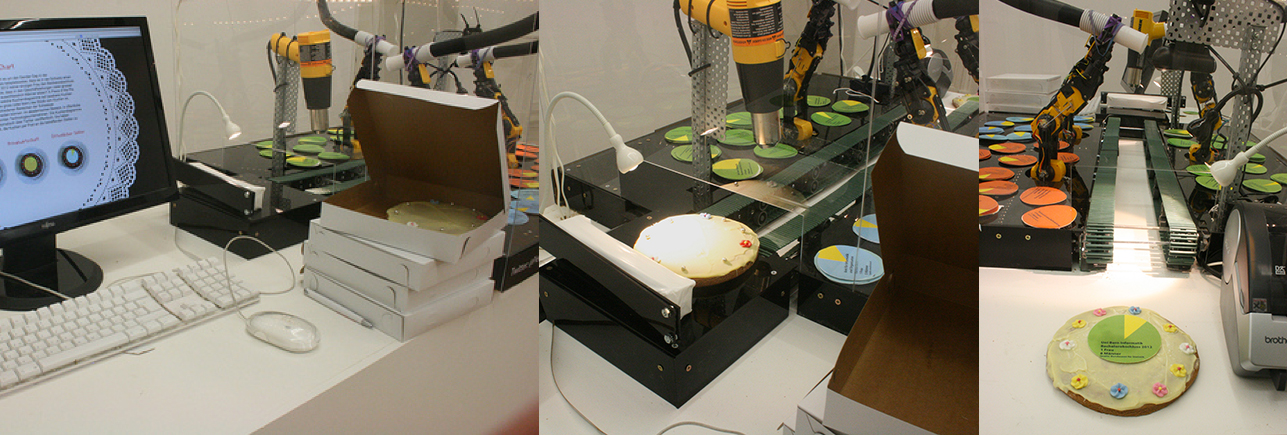I am one of the artists participating in this year’s Art + Technology Lab. My project is a robot that puts pie charts onto edible pies. The data on the pie charts depict gender ratios in places where art and technology work happens (tech companies, museums, galleries, festivals, etc.). It is an edible data visualization that protests the lack of women in these fields.
Data and its visualization are important to my work as well as to feminist protest art overall. LACMA and the original Art and Technology program (1967–1971), as well as other museums and galleries, has in the past been subject to feminist-protest art using data. I will give you a (virtual) tour of some of these sites of protest that connect my work with feminist data visualization protest past and present.
Los Angeles Council of Women Artists Report
When I was writing the application for the Art + Tech Lab grant, I consulted the 1971 Report on the Art and Technology Program at LACMA [link] (A&T) to view projects. I was especially interested in women participants. As I read through the list of participating artists, my heart sank with every name that turned out to have a male artist and/or technologist behind it. Much searching revealed Channa Davis (Channa Horowitz), the author of an unsolicited project proposal that was one of many submitted by women but the only one featured in the 1971 catalogue. Her project was never realized within A&T.
In a 2007 publication accompanying an exhibition at Solway Jones Gallery in Los Angeles, Horowitz made the following statement (original text in the LACMA archive):
“Although Maurice Tuchman, the curator of the show, included my proposal in the catalogue because he ‘thought it looked pretty,’ he did not feel it was appropriate for a woman to discuss an engineering project with the male industrial scientists involved with the show.”
Given that no women were included in the almost all-white male cast of A&T, it was a provocation to women artists in Los Angeles that Maurice Tuchman, who co-curated A&T with Jane Livingston, wrote in the introductory chapters of the Report on the Art and Technology Program that he sought “as wide a range of artists as possible” when soliciting proposals. The Los Angeles Council of Women responded immediately by releasing their own report (archived on the Getty website) to contest the assertions that Tuchman made in the exhibition catalogue.
 Appendix II of the Los Angeles Council of Women Artists Report, June 15, 1971, Getty Research Institute, 2003.M.46. See more at http://blogs.getty.edu/pacificstandardtime/explore-the-era/archives/i143/
Appendix II of the Los Angeles Council of Women Artists Report, June 15, 1971, Getty Research Institute, 2003.M.46. See more at http://blogs.getty.edu/pacificstandardtime/explore-the-era/archives/i143/
The report is a seven-page document that includes an impressive two-page appendix of data. In the introductory paragraphs, the authors write: “As many women as men are enrolled in the art schools of this country, but the number of women who achieve recognition is negligible.” The authors then continue to demonstrate the lack of women artists shown at LACMA by thoroughly discussing the data listed in the appendix. The first page of the appendix lists all one-artist shows at LACMA from 1961 to 1971. Out of 53, only one was dedicated to a woman artist.
They also found that only 4% of the works displayed in group shows at LACMA in the same time span were by women artists. On June 1, 1971, the group counted the works on display in the Ahmanson Building and found that less than 1% were by women. The authors then continued to do more quantitative and qualitative analysis of LACMA and specifically the Art and Technology program. They concluded with a 12-point program aimed at reversing the low numbers of women and minority artists at LACMA.
So why is this report important in the context of art? After all, the bone-dry data as presented by the Women Artist Council is more likely to be found in the domain of engineering and technology rather than in art. This is exactly the point: data can be a useful tool for the underrepresented and excluded to subvert curatorial rhetoric and authority and show how far the inequality goes.
Maurice Tuchman Masks
Maurice Tuchman, the co-curator of the Art and Technology program, was again subject to criticism by women artists in 1981, when he did not include any female artists in the exhibition Art in Los Angeles: 17 Artists in the Sixties. The artists attended the opening of the show wearing masks depicting Tuchman’s face. The protest had a party-like atmosphere; protesters held balloons with the question, “Where are the women and minorities?” By hiding their own diversity behind masks and pretending to celebrate, protesters visualized the disconnect between curator and the audience.
 Protest at County Art Museum, July 16, 1981, photo by Anne Knudsen/Los Angeles Herald-Examiner Collection, courtesy of the Los Angeles Public Library. See the original here.
Protest at County Art Museum, July 16, 1981, photo by Anne Knudsen/Los Angeles Herald-Examiner Collection, courtesy of the Los Angeles Public Library. See the original here.
Other Efforts
At other art venues, women artists have been protesting with data as well. The Guerilla Girls, a group comprised of anonymous gorilla-mask wearing avengers, have been protesting the lack of women in the art world, film, and culture at large since 1985. Their work is characterized by slogans and data as typified by the billboard in the image below. This mobile billboard was placed in front of the Museum of Fine Arts in Boston in 2012.
Another interesting recent project is Gallery Tally, a collaborative project initiated by Micol Hebron. She asks artists worldwide to contribute data visualizations in the form of gallery posters. The posters depict gender ratios in those galleries or the total gender ratio in galleries in specific cities.
What’s Next?
Feminist protest art that uses different forms of data collection, analysis, and visualization has existed for at least 43 years and yet gender parity is not yet reality. This doesn’t discourage me. Rather, I think that a multitude of voices and approaches are needed. Gender data collection, analysis, and visualization needs to be applied to other areas of life as well—in my case, technology creation. My pie visualizations emphasize economic and workplace implications for women working in the art and tech world and in intersections thereof. If you want to follow along as the project develops you can do it here.
Annina Rüst, Art + Technology Lab Grant Recipient





![The Guerilla Girls, 2012, [link] Source: http://www.guerrillagirls.com/posters/BostonNaked.shtml](/sites/default/files/attachments/bostonbillboardatmfa.jpg)